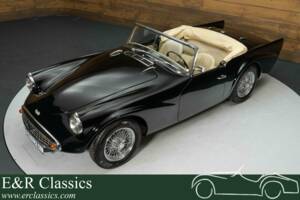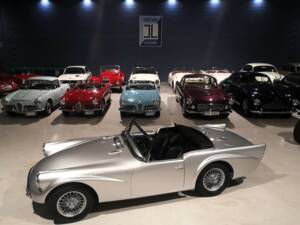Daimler SP 250 classic cars for sale
The Daimler SP 250 stands out among British roadsters with its bold fibreglass body, V8 engine, and shark-inspired design. Produced between 1959 and 1964, it was the company’s last real sports car before Jaguar’s takeover. Today, its rarity, engaging drive, and unique character make every listing on the market noteworthy.
Suchergebnisse

1960 | Daimler SP 250
Daimler SP250 Dart | Body-off gerestaureerd | 1960
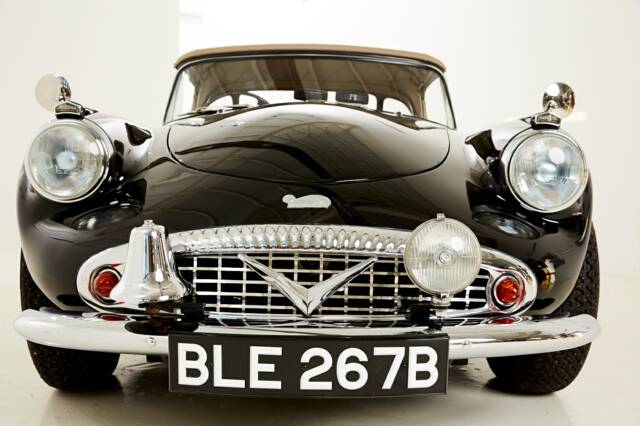
1964 | Daimler SP 250
1964 Daimler Dart SP250 - Ex Metropolitan Police

1960 | Daimler SP 250
1960 Daimler Dart SP250
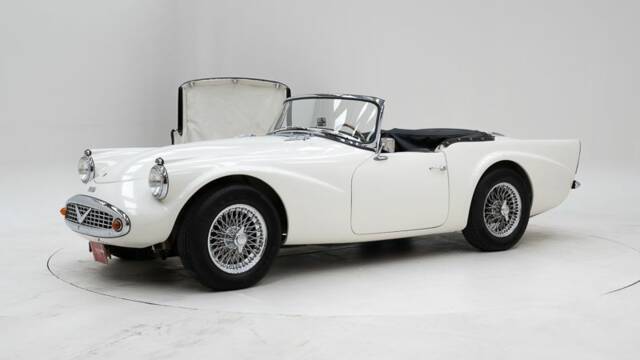
1964 | Daimler SP 250
1964 Daimler SP250 '64
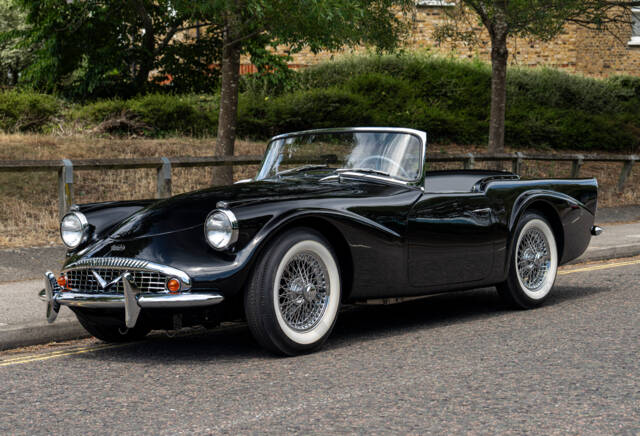

1960 | Daimler SP 250
DAIMLER SP 250 DART
Daimler SP 250 listing references from Classic Trader
Below you will find listings related to your search that are no longer available on Classic Trader. Use this information to gain insight into availability, value trends, and current pricing for a "Daimler SP 250" to make a more informed purchasing decision.

1961 | Daimler SP 250
1961 Daimler Dart SP250 - 38500 miles
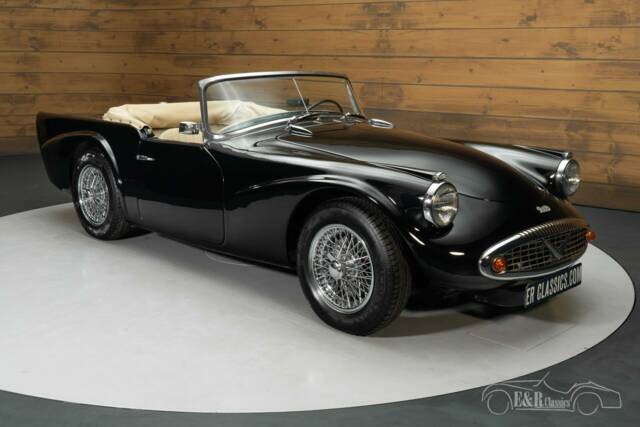
1960 | Daimler SP 250
Daimler SP250 Dart | 1960 - For sale by auction. Estimate 69950 EUR
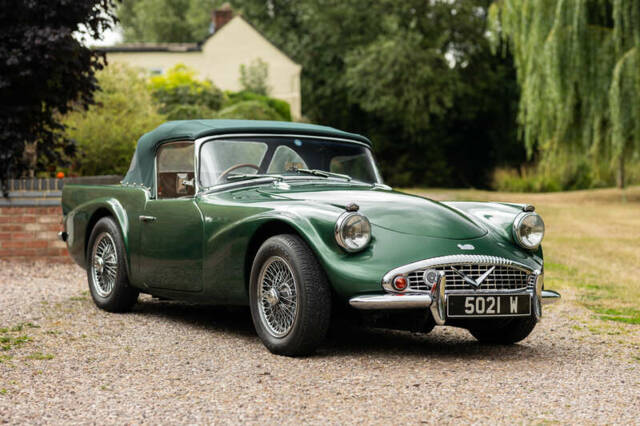
1960 | Daimler SP 250
1960 Daimler SP250 'Dart' A Spec

1963 | Daimler SP 250
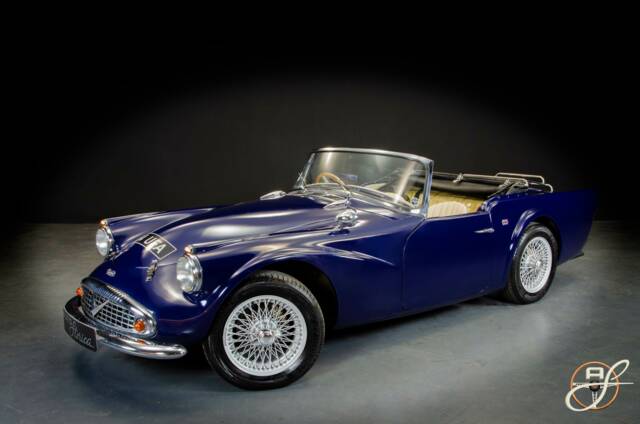
1960 | Daimler SP 250

1962 | Daimler SP 250
1962 Daimler Dart SP250
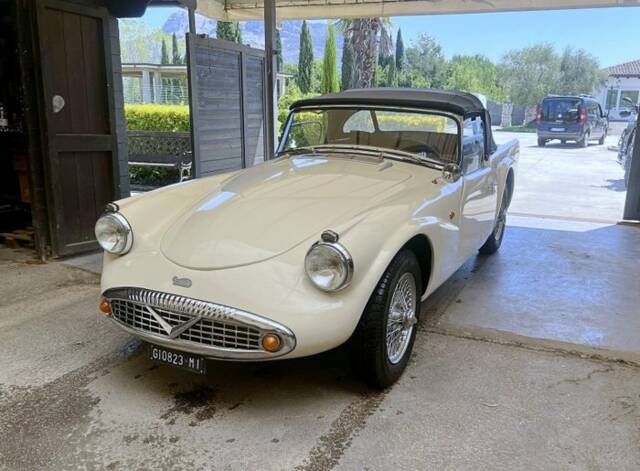
1961 | Daimler SP 250
Daimler - Dart SP 250 - 1961
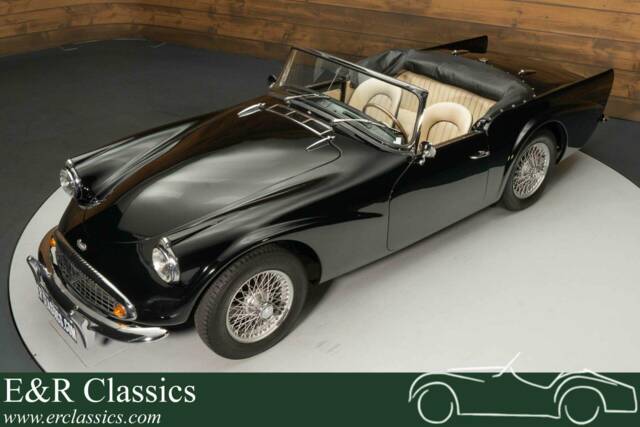
1961 | Daimler SP 250
Daimler SP250 Dart LHD | Gerestaureerd | Automaat | 1961
History of the Daimler SP 250
Daimler unveiled the SP 250 in 1959 as a radical departure from its luxury saloon roots. Its introduction was marked by a strikingly low fibreglass body with pronounced tailfins, which was a bold move in conservative post-war Britain. Developed as Daimler’s answer to the demand for agile, modern sports cars, the SP 250 was the company’s last independent creation before Jaguar acquired Daimler in 1960. The model was originally named Dart, but following a trademark dispute with Chrysler, it was renamed SP 250. Despite ambitious targets, only 2,654 units were built by the end of production in 1964, making the SP 250 a true low-volume niche car.
Model Series History
The SP 250 launched with the "A-Spec" series, which featured the initial lightweight chassis. Not long after, driving feedback led to significant improvements. The "B-Spec" from late 1960 included a reinforced chassis with additional outriggers and structural enhancements to address flexing issues. The final "C-Spec" models, arriving in 1963, featured more refined equipment as standard, such as an upgraded interior. Its engineering drew from the Triumph TR3, using a 14-gauge ladder frame, but with a V8 developed by Edward Turner. There was no direct predecessor, and no true successor entered production: after the Jaguar takeover, any attempts at a follow-up, like the SP252 prototype, never reached showrooms.
Highlights and Unique Features
Distinctive elements include a lightweight body crafted from fibreglass-reinforced polyester, an advanced feature for the era. Most models were exported, especially to North America, though left-hand drive variants remain particularly scarce. Notable design choices are the pronounced shark-mouth grille and attention-grabbing tailfins, both unorthodox for a British roadster. The V8 engine, designed by Edward Turner, not only provided lively performance but also a signature sound unmatched in its class. Factory options were extensive for the period—buyers could specify wire wheels, a hardtop, fog lights, and numerous comfort amenities.
In period police use, the Metropolitan Police commissioned around 26 units as pursuit cars due to the SP 250’s high-speed capabilities (top speeds exceeding 120 mph). Owners benefit from the model's high survival rate, partially thanks to its corrosion-resistant body.
Statistically, the SP 250 represents 100% of Daimler cars listed and viewed in our database, highlighting its unique status in the Daimler line-up today.
Technical Data
Special Editions and Rare Variants
Collectors seek out the rare left-hand drive versions, as most examples were built for the British market with right-hand drive. The B-Spec and C-Spec models, due to their improved chassis and better standard equipment, are especially noted for their usability and structural robustness. Factory hardtops, factory wire wheels, and police-interceptor models (ex-Metropolitan Police) are considered standouts due to their unique provenance.
Weak Spots and Common Issues
Early A-Spec versions suffered from chassis flex and even doors unexpectedly flying open—problems resolved by chassis reinforcements in later versions or through professional restoration. The fibreglass body resists rust, but mechanical upkeep is essential: attention to regular maintenance of the V8, proper lubrication of suspension components, and ensuring the Girling disc brakes function optimally is crucial. As the SP 250 shares mechanicals with some Jaguar and Triumph models, parts availability is generally manageable, but some trim items can prove difficult to source.
Engine, Performance, and Handling
The 2.5-litre V8 designed by Edward Turner delivers a high-revving, smooth and flexible response, with a characterful soundtrack at all speeds. Backed by a five-bearing crankshaft, the motor is renowned for both its durability and willingness to rev above 6,000 rpm. With rear-wheel drive, a lightweight chassis, and expertly tuned rack-and-pinion steering (especially on later models), the SP 250 manages a blend of comfort and dynamic agility. Girling disc brakes all-round ensure exceptional stopping power for the era. In period road tests, 0-60 mph was covered in under nine seconds, with fuel economy circa 25 mpg. The car’s handling was further refined in the B- and C-spec revisions, which improved both stability and ride comfort.
Popular Models:
- SP 250 B-Spec: Reinforced chassis, improved safety and rigidity.
- SP 250 C-Spec: Enhanced comfort, better standard equipment. undefined
Design, Interior, and Accessories
The SP 250’s body design is instantly recognisable: low-slung, with a distinctive shark-mouth grille, oval chrome radiator, and prominent rear fins. These playful lines contrast with the understated interiors, which typically feature leather seats and a simple yet effective dash layout. The cabin is technically a 2+2, though the rear seats are suitable mainly for children or luggage. A large luggage compartment increases daily usability compared to most open sports cars of the time. Factory options were comprehensive: from wire wheels and heated screens to a factory hardtop, stainless steel exhausts, and bespoke tonneau covers. Special colour palettes and trim choices added to the car’s appeal, especially for North American buyers.
Other Noteworthy Features
The SP 250 enjoys historic status in the UK: owners benefit from MOT exemption, road tax exemption, and compliance with low-emission zones. The unique combination of British engineering and American-influenced styling ensures every SP 250 attracts attention, with many examples still in use thanks to their robust construction and corrosion-proof body. Several have featured in television and film, further supporting their place in motoring culture.
Summary
The Daimler SP 250 is a rare, technically advanced, and deeply individualistic British sports car. Its V8 engine, fibreglass body, and bold design ensure it remains singular within the Daimler line-up. With surviving examples benefiting from robust engineering and rustproof construction, and 100% representation of Daimler cars in both supply and demand on the classic car market, the SP 250 stands as a truly unique proposition for enthusiasts searching for both performance and presence.
